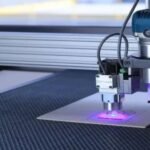The professional headshot – a staple of resumes, LinkedIn profiles, and company websites. But scheduling a photography session can be time-consuming and expensive. Enter AI headshot generator , a new wave of technology promising high-quality professional headshots at your fingertips.
This blog delves into the world of AI headshot generation, exploring how these models are trained and the exciting possibilities they hold for the future. We’ll also discuss the current limitations and considerations when using AI-generated headshots for professional purposes.
Demystifying AI Headshot Generators: How Do They Work?
At the heart of AI headshot generators lies a powerful technology called Generative Adversarial Networks (GANs). Imagine two neural networks – a generator and a discriminator – locked in a constant game of one-upmanship.
- The Generator: This network is tasked with creating new, realistic headshots. It starts with a pool of existing headshot images and learns the underlying patterns and features. The generator then uses this knowledge to progressively build new headshots, pixel by pixel.
- The Discriminator: This network acts as the quality control. It receives both real headshots from the dataset and the generator’s creations. The discriminator’s job is to identify the fakes and tell them apart from the genuine photos.
With each iteration, the generator refines its approach based on the discriminator’s feedback. Over time, the generator learns to create headshots that are indistinguishable from real photographs
The Rise of AI Headshot Generators
With the advent of deep learning algorithms and advancements in computer vision, AI headshot generators have emerged as a powerful tool for creating high-quality professional portraits. These systems leverage vast datasets of human faces to learn intricate facial features, expressions, and nuances. By analyzing these patterns, AI models can generate photorealistic headshots that rival those captured by professional photographers.
The Training Data: Building the Foundation for Success
The quality and diversity of the training data are paramount to creating realistic and professional-looking AI-generated headshots. Here’s what goes into building a strong training dataset:
- Quantity: Millions of high-resolution images are needed to train the AI effectively. These images should encompass a vast array of facial features, ethnicities, genders, and age groups.
- Quality: The training data should consist of well-lit, professional-grade headshots captured from various angles and with diverse expressions. Blurry, low-resolution images can negatively impact the model’s ability to learn and generate realistic details.
- Diversity: Representation matters. The training data should reflect the multicultural world we live in, ensuring that the AI can generate headshots that cater to individuals of all backgrounds.
Beyond Faces: Additional Considerations for Training

At the heart of AI generator images and AI headshot generators lies the process of training sophisticated neural networks. This involves feeding the AI system with an extensive dataset of labeled images, comprising diverse individuals, poses, and lighting conditions. Through iterative training and optimization, the AI model gradually learns to discern facial features, skin tones, and other crucial elements that define a captivating headshot. While facial features are crucial, AI headshot generation goes beyond replicating pixels. Here are some factors considered during training:
- Lighting: Lighting plays a significant role in creating a professional and flattering headshot. The training data should include images with various lighting styles, from studio setups to natural light environments. The AI learns to recreate these lighting effects in the generated headshots.
- Backgrounds: Professional headshots typically feature clean, uncluttered backgrounds. The training data incorporates various backgrounds to equip the AI to generate headshots that seamlessly integrate into online profiles and company websites.
- Pose and Expression: A confident and approachable expression can significantly enhance a headshot. Diverse poses and expressions are included in the training data, allowing the AI to generate headshots that convey the desired professional image.
The Future of AI Headshot Generation: Benefits and Possibilities
AI headshot generators offer a range of potential benefits:
- Accessibility: Anyone can generate professional-looking headshots from the comfort of their homes. This democratizes the process and removes the cost barrier associated with professional photography.
- Convenience: AI headshots eliminate the need to schedule photo sessions, saving valuable time and resources. You can experiment with different looks and expressions, generating the perfect headshot in minutes.
- Customization: Some AI headshot generators allow for limited customization, enabling you to control aspects like background color, clothing style, and even subtle adjustments to facial features.
AI headshot generation is a rapidly evolving technology. As training data continues to grow and models become more sophisticated, we can expect even higher-quality, more realistic headshots. Additionally, we might see advancements in areas like:
- Emotional Intelligence: Imagine an AI that can generate headshots that convey specific emotions, such as confidence, warmth, or approachability. This could be a valuable tool for personal branding and online networking.
- Real-time Generation: Imagine generating AI headshots on the fly during video conferencing or online meetings. The AI could adapt the headshot in real-time, adjusting for lighting conditions or camera angles.
- Pose and Composition: Advanced AI could analyze body language and create more dynamic and engaging poses.
- Background Automation: AI could remove the background from user-uploaded photos and seamlessly integrate them into professional headshot templates.
Closing Thoughts
In the fast-paced world of digital media and professional branding, AI headshot generators have emerged as a game-changing innovation, redefining the way we approach portrait photography. Through advanced machine learning algorithms and sophisticated neural networks, these AI models offer a seamless and efficient solution for generating high-quality headshots with unparalleled customization options.
As we continue to push the boundaries of AI technology and explore new frontiers in visual communication, it’s essential to uphold ethical standards, promote inclusivity, and prioritize transparency and accountability. By harnessing the power of AI responsibly and ethically, we can unlock the full potential of this transformative technology while preserving human creativity, empathy, and connection.
In the dynamic landscape of professional headshots, AI is not just a tool; it’s a catalyst for innovation, empowerment, and artistic expression. As we embrace the possibilities of AI-generated portraits, let us remember the human stories behind the pixels and the enduring power of human connection in an increasingly digital world.
















